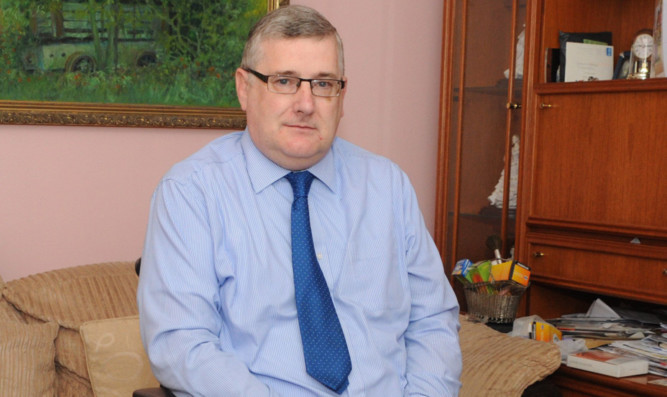A Fife councillor fears he may lose his motorised wheelchair and have to stand down at the next election due a change in the benefits system.
Councillor Peter Lockhart suffers from the painful condition fibromyalgia and relies on his electric wheelchair to get about.
He is entitled to the chair and a Motability car but fears when he has to switch from Disability Living Allowance to Personal Independence Payment this year he will lose that entitlement.
To meet one of the criteria for the enhanced mobility element of PIP claimants must be incapable of walking more than 20 metres.
Mr Lockhart, 55, a Labour member for his home town of Cowdenbeath, said: “Twenty metres isn’t far. I could probably walk more than 20 metres but whether I could get back is another story and for the rest of the day I would be sore and unwell.
“I could well lose my disability benefit, and the trouble with that is I would also lose my electric wheelchair.
“My wheelchair is a lifeline. Without it I really don’t know what I would do.
“While I could carry on being a councillor, it would cut down an awful lot of the work I could do, so I probably wouldn’t stand for election again.”
To make matters worse, Mr Lockhart’s wife Anne suffers from multiple sclerosis and the couple fear she may also lose out.
The roll-out of personal independence payments began in 2013 and will be completed this year for those already receiving DLA.
Mr Lockhart said: “From now, people can start expecting to get letters through their door, saying they have to go for their assessment.
“Among disabled people, there is genuine fear. I would imagine 50% of wheelchair users can walk, they just can’t walk far.
“The government said DLA isn’t a good benefit for disabled people and doesn’t meet their needs but the disabled community said it’s the best benefit we’ve ever had.”
While people can appeal against determinations of their benefit entitlement, Mr Lockhart said: “If you have a Motability car or wheelchair, you will lose them until the appeal process is over and appeals were taking up to a year at one point.”
A Department for Work and Pensions spokesman said: “The PIP assessment has been designed to target support on those who need it most, with a greater proportion receiving higher levels of support than under the old arrangements.
“Over 22% of people are getting the highest level of support under PIP, compared to 16% under the outgoing DLA system.
“Individuals who can move more than 20 metres can still receive the enhanced rate if they cannot move these distances safely, reliably, repeatedly and in a reasonable time period.
“Furthermore, PIP better recognises mental health conditions, as claimants will be able to get the enhanced rate if they cannot plan and follow a familiar journey unassisted. Under the old DLA, higher-rate mobility was focused on physical disability.”
Photo by David Wardle
